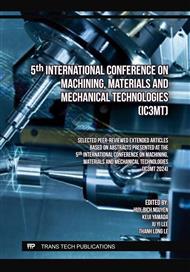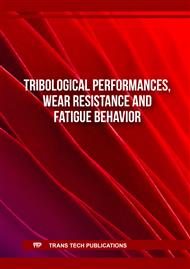p.45
p.53
p.61
p.69
p.75
p.83
p.93
p.107
p.117
Improvement of Prediction Reliability of Tool Edge Contour Position in Turning ― Influence of Boundary Wear on Process of Dividing Roughness Curve into Feed Marks in Estimating Roughness Components
Abstract:
It is well known that the surface roughness in turning consists of the theoretical roughness, vibration in the depth of cut direction, and overcutting by adhered work material. Some of authors had already proposed the method to calculate surface roughness components. In this method, the approximate arc was used as a representative tool contour of the tool contour to dividing roughness curve into each feed marks. The arc was defined by the height of the intersection of the measured tool contours set at feed intervals horizontally. However, when the boundary wear occurred in the finished surface formation area, the arc defined by the height of the intersection sometimes didn’t agree with theoretical roughness obtained by the measured tool contours set at feed intervals horizontally. As a result, there was concern that the difference affected the prediction reliability of tool edge contour position during cutting. Therefore, both of theoretical roughness and approximate arc of the measured tool contour were defined by the peak point of the measured tool contours set at feed intervals horizontally. Additionally, the representative tool contour was also defined by the different arcs to adopt the asymmetry of tool wear. Using the newly representative tool contour, the reliable roughness components could be calculated regardless of the tool pattern.
Info:
Periodical:
Pages:
75-81
Citation:
Online since:
March 2025
Keywords:
Price:
Сopyright:
© 2025 Trans Tech Publications Ltd. All Rights Reserved
Share:
Citation:



